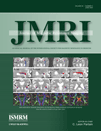Noninvasive in vivo electron paramagnetic resonance study to estimate pulmonary reducing ability in mice exposed to NiO or C60 nanoparticles
Abstract
Purpose
To develop new methods that can estimate the influences of manufactured nanomaterials on biological systems, the in vivo pulmonary reducing ability of mice that had received inhalation exposures to NiO or C60 nanoparticles was investigated using a 700 MHz electron paramagnetic resonance (EPR) spectrometer.
Materials and Methods
NiO or C60 suspensions were atomized and mice in exposure chambers inhaled the resulting aerosol particles for 3 hours. The exposure conditions, number-based geometric average diameters, and the average number concentration were precisely controlled at almost the same levels for both NiO and C60 nanoparticles. Two days or 2 weeks after exposure, an EPR study was conducted noninvasively. Temporal changes in EPR signal intensity at the target area (ie, lung field) were obtained by the region-selected intensity determination (RSID) method.
Results
NiO nanoparticles significantly suppressed pulmonary reducing ability 2 days and 2 weeks after exposure, but C60 nanoparticles had no such effect.
Conclusion
This is the first in vivo estimation of the reducing ability in experimental animals exposed to manufactured nanoparticles. J. Magn. Reson. Imaging 2009. © 2009 Wiley-Liss, Inc.




